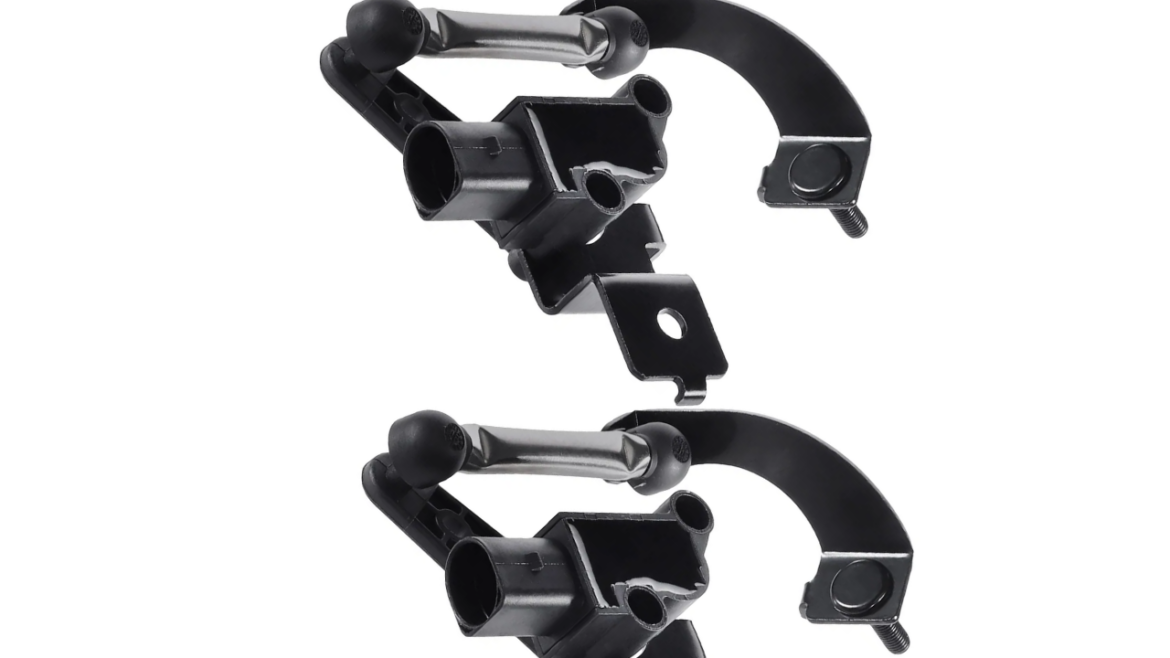A rotation angle sensor, commonly referred to as a level sensor, is intended to identify changes in the car’s control arm’s angle. On each wheel mount, directly opposite the direction of travel, are attached connecting components called control arms. By transmitting the shear stresses between the wheel and body and guiding the wheel carrier in a roughly vertical direction, they stabilize the wheel alignment.
Ride height sensors are used as input for the automatic headlight leveling system in addition to supporting the air suspension system for automatic level management. The rod connecting the A-Premium ride height level sensor body to the wishbone or control arm is fastened to the chassis. The moving suspension causes the rod to rotate when the car is moving, or, for example, when a heavy load is added.
Signs of Ride Height Sensor Malfunctioning
Following are the signs of a bad ride height sensor:
- It’s either too high or too low for the suspension system. Suspension systems that are either too high or too low are among the most typical symptoms of a malfunctioning ride height sensor. Due to this, driving the car may become challenging, and it may even eventually result in damage to other car parts.
- Your car’s tires wear in an inconsistent manner. Uneven tire wear may result from the ride height sensor’s malfunction. This is because the suspension system cannot keep the tire properly aligned, which might cause the tire to wear down excessively on one side.
- The dashboard warning lights might also provide information about a failed ride height level sensor. Modern cars include dashboard warning lights that will come on if there is an issue with the suspension or ride height sensor.
- You should take the ride height sensor into consideration if the car leans to one side or if one side of the car sits lower than the other. If you notice any issues, have your car inspected because this problem will be challenging to resolve.
Purpose of the Ride Height Level Sensor
The purposes of ride sensors are as follows:
Efficacy and Stability
To maximize traction and stability, ride height must be kept constant. A vehicle’s ride height can affect how the tires align with the road surface if it is either too high or too low. This can cause less grip when accelerating, braking, or turning, which might result in a loss of control. By ensuring that the car’s tires maintain optimal contact with the ground, ride height level sensors enhance traction and stability all around.
Load Adjustment
The weight distribution in a vehicle that pulls a trailer or carries high loads might alter the suspension characteristics and ride height. Ride height sensors are used to modify the suspension in response to load changes to avoid excessive sagging or bottoming out. Thus, the impact on handling, stability, and braking performance is kept to a minimum, and the vehicle retains its specified ride height.
Comfort and Ride Quality
The comfort of a vehicle’s passengers is directly impacted by its ride height. The suspension may bottom out over bumps if the ride height is set too low, making the ride rough. On the other hand, a ride that is excessively high can seem bouncy or unsteady. Ride height sensors help to maintain the ideal ride height, giving passengers a smoother and more comfortable ride.
Conclusion
In general, ride height sensors are employed in air suspension-equipped automobiles to measure the distance between the ground and the chassis. The method for setting the ride height sensor will therefore vary depending on the precise make and model of the car. The handling, stability, and comfort of the vehicle can all be impacted by improperly set ride height sensors, therefore, it’s crucial to check this. You are also encouraged to let a trained expert handle the replacement procedure.
